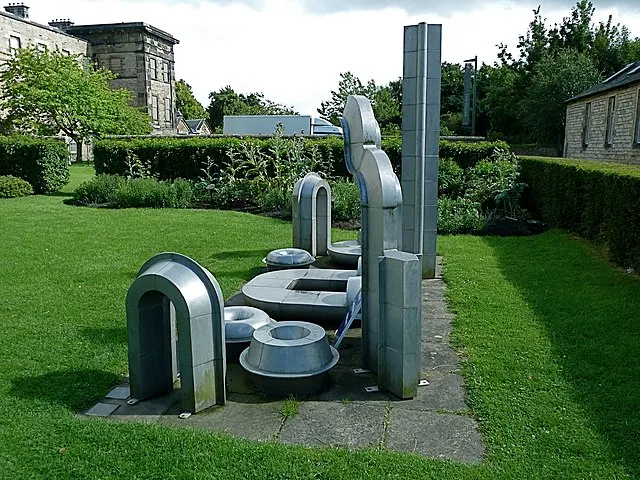Designing a sculpture can be a challenging and rewarding process. Sculpture is a three-dimensional art form that can be created in a variety of mediums, including stone, metal, clay, and wood.
In this article, we will explore the steps involved in designing a sculpture, including the tools and materials you'll need, the different approaches you can take to design, and the ways in which you can bring your sculpture to life.
Choosing a Medium
The first step in designing a sculpture is to choose a medium. There are a variety of mediums to choose from, each with its own unique properties and characteristics. Some of the most popular mediums for sculpture include:
- Stone: Stone is a durable and versatile medium that can be carved and shaped into a variety of forms. Marble, granite, and limestone are popular choices for stone sculptures.
- Metal: Metal is a strong and flexible medium that can be manipulated into a variety of forms. Bronze, steel, and copper are popular choices for metal sculpture.
- Clay: Clay is a malleable and pliable medium that can be shaped and molded into a variety of forms. Terracotta and porcelain are popular choices for clay sculpture.
- Wood: Wood is a warm and natural medium that can be carved and shaped into a variety of forms. Oak, maple, and cherry are popular choices for wood sculpture.
Developing a Concept
Once you've chosen a medium, the next step is to develop a concept for your sculpture. Your concept should be based on a specific theme or idea that you want to express through your sculpture. Some artists choose to create abstract sculptures, while others prefer to create figurative sculptures that represent people, animals, or objects.
Sketching and Modeling
After you've developed a concept for your sculpture, the next step is to begin sketching and modeling your design. Sketching allows you to explore different ideas and possibilities for your sculpture, while modeling allows you to create a three-dimensional representation of your design.
When sketching your design, it's important to consider the proportions, balance, and composition of your sculpture. You can use a variety of tools to create your sketches, including pencils, pens, and markers.
When modeling your design, you'll need to choose a medium that is appropriate for your chosen medium. For example, if you're creating a sculpture in clay, you'll need to use clay to create your model. If you're creating a sculpture in stone, you may need to use a softer medium, such as clay, to create your model before moving on to the stone.
Carving and Shaping
Once you've created your model, the next step is to begin carving and shaping your sculpture. This is where the real work begins, as you'll need to use a variety of tools and techniques to bring your sculpture to life.
Some of the tools you'll need for carving and shaping your sculpture include chisels, hammers, rasps, and files. You may also need to use power tools, such as drills and grinders, to remove larger amounts of material.
As you work on your sculpture, it's important to step back and look at your work from different angles. This will allow you to see how your sculpture is developing, and to make adjustments as necessary.
Finishing and Polishing
Once you've finished carving and shaping your sculpture, the next step is to finish and polish it. This involves smoothing out any rough edges and adding a finish to your sculpture.
Some of the finishing techniques you can use for your sculpture include sanding, grinding, and polishing. You can also add a finish to your sculpture to protect it from the elements and enhance its appearance.
Displaying Your Sculpture
The final step in designing a sculpture is to display it. Displaying your sculpture involves choosing the right location and setting for your work.
If you're creating a large outdoor sculpture, you may need to work with a team of professionals to install your work in a public space. This may involve using cranes, scaffolding, and other equipment to move and position your sculpture.
If you're creating a smaller sculpture, you may be able to display it in your home or studio. You can use pedestals, shelves, or other display fixtures to showcase your work and enhance its visual impact.
Tips for Designing Sculptures
- Sketch and Model: Sketching and modeling are important steps in the design process. Sketching allows you to explore different ideas and possibilities, while modeling allows you to create a three-dimensional representation of your design.
- Choose the Right Medium: Choosing the right medium is important for creating a successful sculpture. Consider the properties and characteristics of different mediums, and choose the one that is best suited for your design.
- Experiment with Tools and Techniques: Experimenting with different tools and techniques can help you achieve the desired results for your sculpture. Don't be afraid to try new approaches and explore different techniques.
- Step Back and Evaluate: As you work on your sculpture, it's important to step back and evaluate your progress. This will help you see how your sculpture is developing and make adjustments as necessary.
Conclusion
Designing a sculpture is a complex and challenging process that requires creativity, skill, and patience. By choosing the right medium, developing a strong concept, and using the right tools and techniques, you can bring your sculpture to life and create a unique and memorable work of art. Whether you're creating a large outdoor sculpture or a small sculpture for your home or studio, the key is to be patient, persistent, and willing to experiment with different approaches until you achieve the desired results. With practice and dedication, you can become a skilled and successful sculpture designer.





